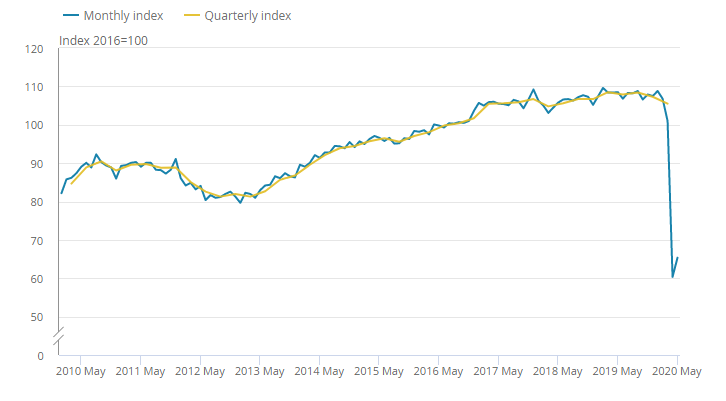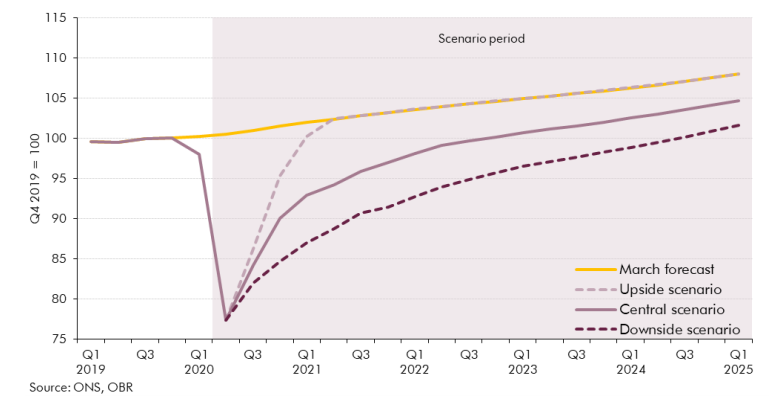Nick Sacke is Head of IoT and Products, at Comms365 in this feature for Construction Online he discusses the evolution of the construction ecosystem.
Innovations in digital technology are fostering change and unlocking significant potential improvements in operational processes for the construction industry across the globe. At every level, from the conceptual design all the way through to the physical construction and continued upkeep of the building, new digital devices, applications and methodologies are starting to prove their worth. Yet, IT investment within the construction industry has typically lagged far behind other industries, with less than one per cent of revenues being spent on IT compared to more than four per cent being invested by the automotive sector.
Some of the most forward thinking organisations are seeing the full value and opportunities that investing in innovative digital technology can provide from day one, and are leading the way in revolutionising how construction sites operate. However, for many, some of the most basic requirements of running a site are still a challenge – such as gaining access to high speed, reliable internet networks to support people, applications, devices and processes, wherever the site may be located. The entire industry should therefore look to embrace new technology that provides demonstrable operational benefit, but also ensure that all sites have access to portable, high quality internet connectivity to keep pace with growing user demand, retain profitability, and to expand digitalisation in the construction site. Let’s take a look at some of the leading innovations that may help to run the construction sites of tomorrow?
Advances in surveying
One particular issue that often causes construction projects to be delayed is when undetected geological elements are discovered that were not initially picked up by the ground survey. Not only does this delay the project in terms of time, but can also be one of the primary reasons that causes projects to go over budget. With new photographic and geographic information systems integrated into affordable drones and unmanned-aerial-vehicle (UAV) technology, surveying accuracy and speed has been drastically improved, coupled with easier access to areas that historically were inaccessible. For example, light-detection-and-ranging (lidar) combined with ground-penetrating radar and GPS positioning provides additional data allowing for more detailed surveying of above and below groundwork before construction begins. Digital data from the drone is typically captured onto a memory card and this is then sent via courier to a facility where the data can be uploaded and manipulated by software into usable information. With a high quality internet connection at site, there is now the possibility of patching the drone’s data directly from the site to Amazon Web Services data storage and application hosting servers (AWS), cutting down the time to generate the report.
Building information modelling and augmented reality
5-D building information modelling allows for a project to be fully designed in principle, before building work starts. This process provides a platform to analyse the planned design in detail, as well as record and measure any potential changes to the design or scheduling, taking costs and timings into consideration as well as the parameters of the building in three dimensions. Not only does this provide a cost effective and efficient way to measure alterations to the design, it can also predict and show any possible issues with the construction and give attention to areas that need particular focus for safety aspects.
Although the use of this technology is only set to grow within the industry, human intervention will always be necessary to ensure that the information modelling is reflective of reality. Furthermore, with the use of IoT technology collating vast volumes of data from deployed sensors, together with human insight this results in a model that is not only incredibly powerful, but also reliable and crucially – scalable.
Augmented Reality (AR) software can also be used to enhance the 5-D model through the use of wearable technology and mobile devices. Through digitally mapping out the environment, content can be pinned and projected through holograms, which can be additionally accessed and updated by use of voice commands. For instance, AR could be used to position holographic markings displaying warnings and awareness of an electrical conduit which is positioned behind a wall, to caution and inform engineers that would be accessing this area of the building in the future.
At the site level, high quality wireless networks are required to provide access to site mobile devices, wearable technology and workstations to gather the mapping data and send it to artificial intelligence resources for analysis and update – in real time. This delivers a highly dynamic, up to date, and efficient planning process, with information all digitised and available for use by multiple internal and external stakeholders.
Enhanced efficiency through collaboration and mobility
Construction is an industry that remains profoundly dependent on paper-based and manual processes that are inherently inefficient and prone to error. Large scale projects in particular, typically take 20 percent longer to finish and can be up to 80 percent over budget with traditional methods.
The adoption of digital-collaboration solutions is already significantly improving processes in the industry, positively impacting supply-chain orders and progress reports. Cloud-based software as a service application have risen in popularity as a result of the availability of lower cost wireless connectivity and ensures the efficiency and mobility of the construction team.
Collaboration and mobility at construction sites also requires high quality wireless networks, with the ability to separate the traffic from different groups: in-house employees, contractors, and other site visitors.
An interesting example of an end-to-end digital collaboration project is that of a five billion dollar rail project that was able to save more than 110 million dollars and significantly increase productivity by using automated workflows, review and approval. What this demonstrates is that deploying technology throughout the entire construction process is essential. IoT is also a significant component of this shift, which through machine learning is able to enrich data and make rules-based changes in a highly automated way to systems with little supervision, proving a valuable contributor to project efficiency. Examples of this include tracking assets, controlling costs and minimising equipment downtime, thereby unlocking additional productivity.
The ‘Elephants in the Room’: Risk Sharing and Change Management
Risk management remains one of the largest components that determines the final cost of any construction project. With companies starting to become part of joint ventures, where risk allocation is recognised and managed, there is a level of transparency that allows for a fair share of risk and success for all parties involved. This includes the results of technological innovation such as access to real-time data and cost control.
Moreover, in order to fully realise the benefits that come from the digitalisation of construction, the importance of these changes needs to be clearly communicated by top management and continually managed. Change management will enable organisations to have clear direction of where these new innovations will take the organisation, and what impact they will make. Without this component, there is the potential of pushbacks, which may lead to a fall in productivity and negatively impact success.
‘Carpe diem’: the choice facing construction firms
Digitalisation of the global economy and every industry in it is underway but some industries have made more progress than others. In the Construction industry, there are promising signs of activity and engagement with digital technology and opportunities to leverage its transformative power and scale to positively impact sites, people and operational processes. To effectively deploy digitalisation at sites, the basic requirement of high quality, rapidly deployed, portable and reliable internet networks to support applications and collaborative processes is a must, which needs to be taken care of first, not last. Firms should work with an ecosystem of experienced and trusted providers who can supply the connectivity and IoT services required by sites. The potential rewards to firms that ‘seize the digitalisation day’ will be instantaneous.
If you would like to read more like this, then please click here
The post Digital Evolution of the Construction Ecosystem appeared first on UK Construction Online.

